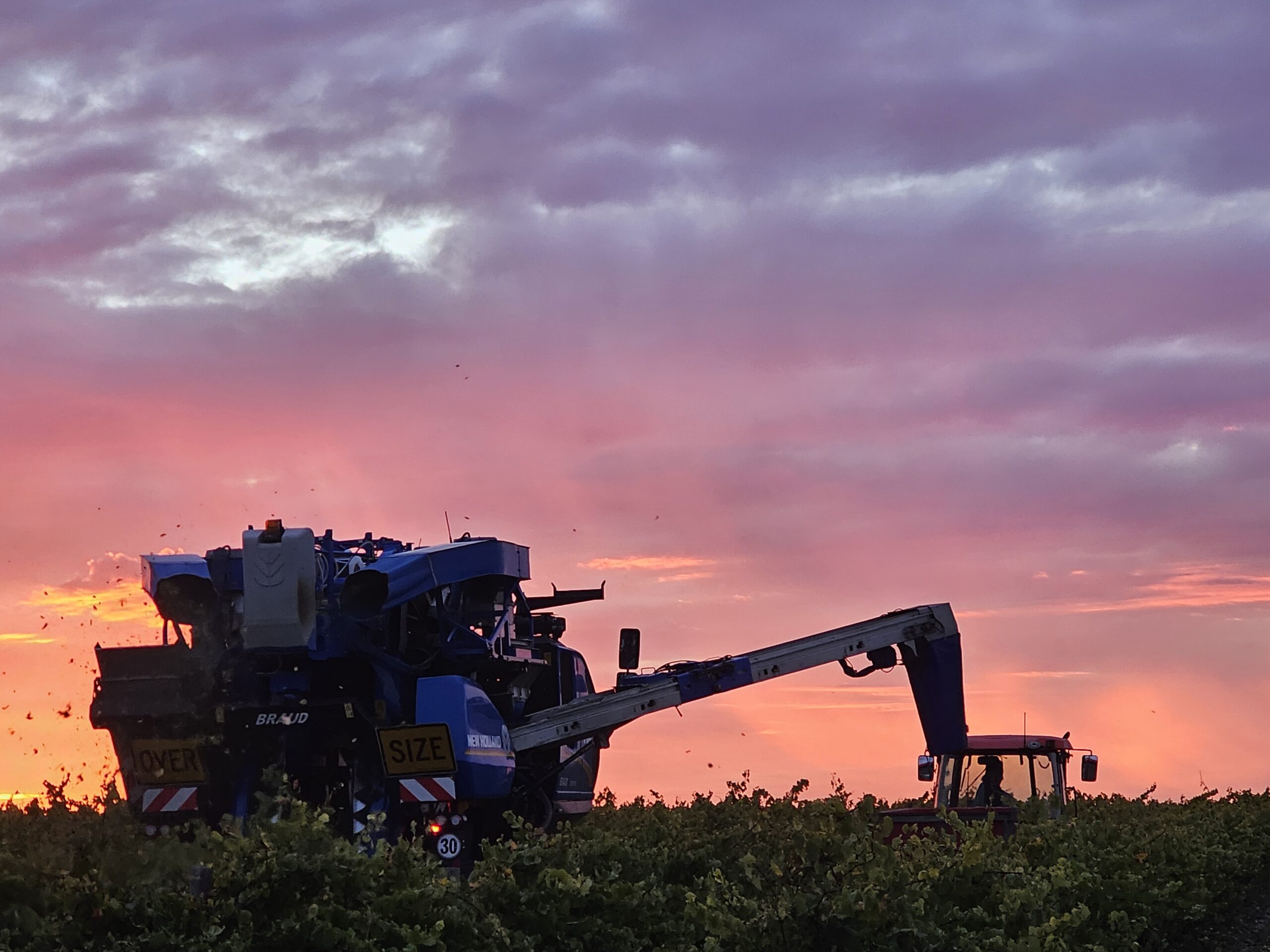The 2024 vintage presented a few challenges during the growing season. Langhorne Creek experienced a dry July, though early and late winter rainfall was above average, and a few riverside vineyards also received a small flood, giving the soil a good soak. September and October were very dry and a few growers suffered minor frost damage and crop losses. An early but windy and cool extended flowering period in October challenged berry set and uniformity. This was followed soon after by a particularly wet November, December and January. This was good for vines that had achieved berry set but sent many vines into a vegetative cycle with some bunch shatter and further crop losses.
The mild summer was great for vine development and maintaining acidity, with a few warm periods in February pushing vines towards a focus on ripening fruit. Generally, yields were moderate and below average due to the poor flowering period, despite the rainfall that followed flowering. The larger canopy growth from additional rainfall kept fruit out of the sun and reduced levels of sunburn while maintaining acidity and aromatic compounds. That is, up until the Adelaide Cup weekend from 8th until 11th March, when the region experienced 4 hot days; 34.9 C, 40.4C, 39.6C and 39.9°C with above average night temperatures in the low 20s.
The first harvest in the region snuck in on the last day of January with the beginning of the intake of fruit for sparkling base. The white still-wine intake began with Verdelho in early February. The red grape harvest kicked in early with some Shiraz, Malbec and Cabernet Franc and pushed along rapidly until 8th March when the region held its breath to ride out the heat mentioned above. This period put vines, people, and ferments under pressure but consistent monitoring, adaptation, overnight pressing and hard work maintained quality.
Crop losses of up to 15-25% were reported from the heat through reduction of berry weight, particularly in Shiraz. The bulk of the Langhorne Creek vintage concluded by the second week of April with Shiraz, Cabernet Sauvignon and other late varieties completing the winery intakes.
In a very subdued wine industry suffering a severe oversupply of red grape varieties it is an understatement to say it has been a tough year emotionally for most. All vintages have their challenges and not all are predictable, but Langhorne Creek continues to produce wine of excellent quality. Standout varieties Shiraz, Grenache (and blends) and Cabernet (and blends!) are shining, along with some excellent Malbec. Acid balance in Chardonnay has been exceptional and tops off the list of classics from the Langhorne Creek wine region.
A vintage all producers should be proud of.
(Acknowledgement: with thanks for input from Paul Hotker, Bleasdale Vineyards)



